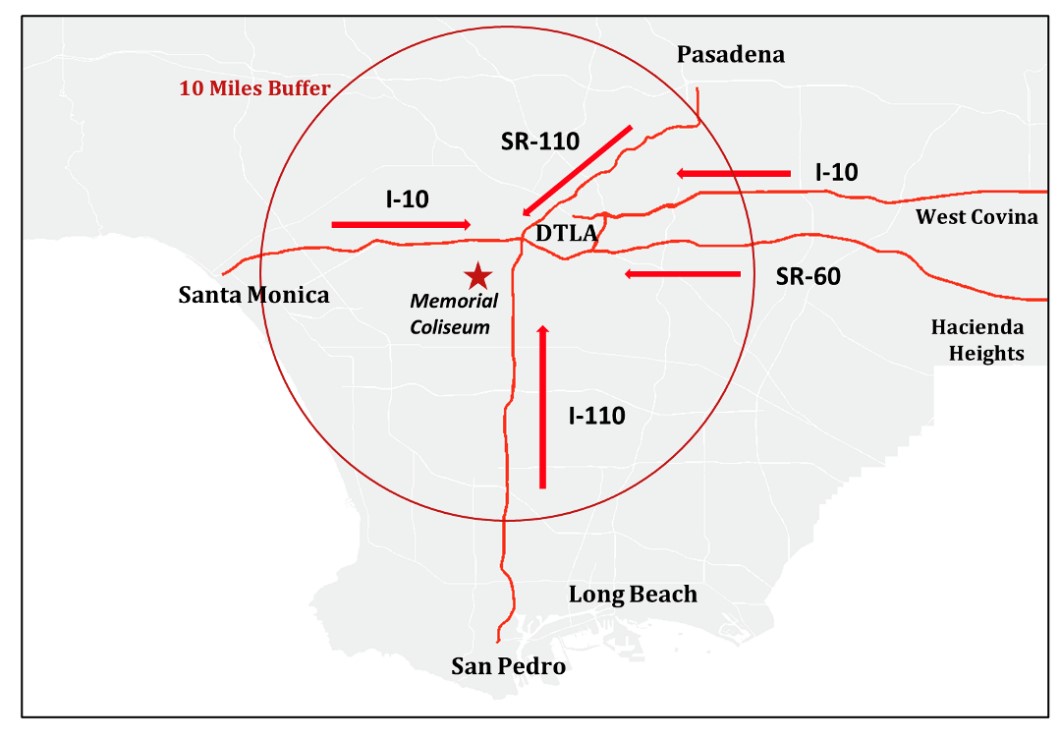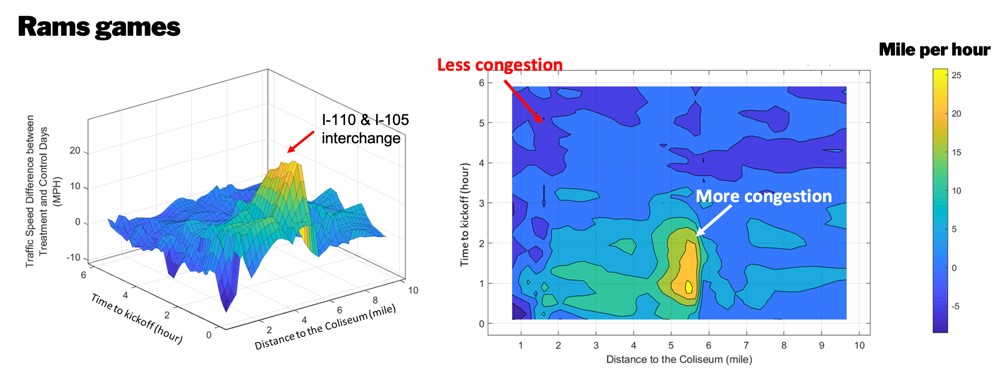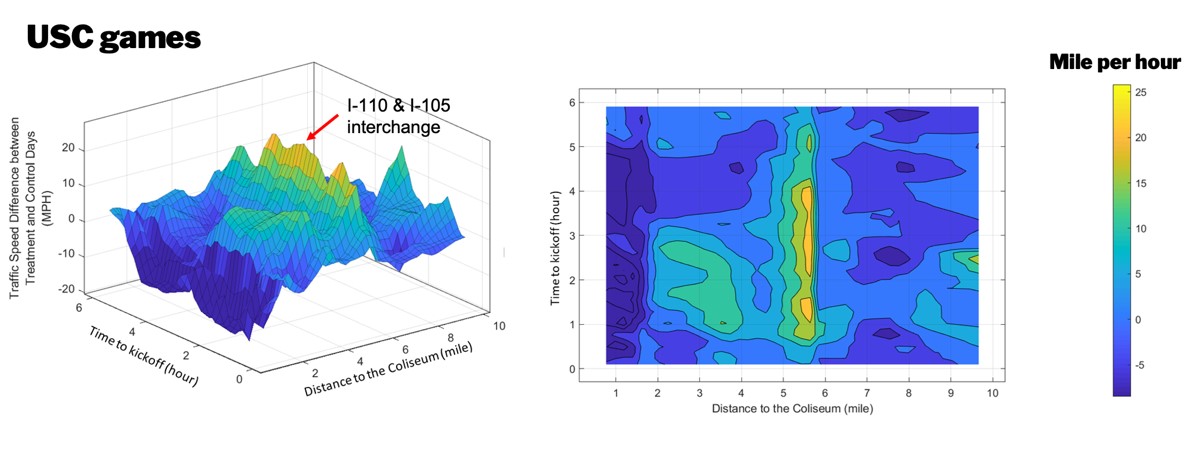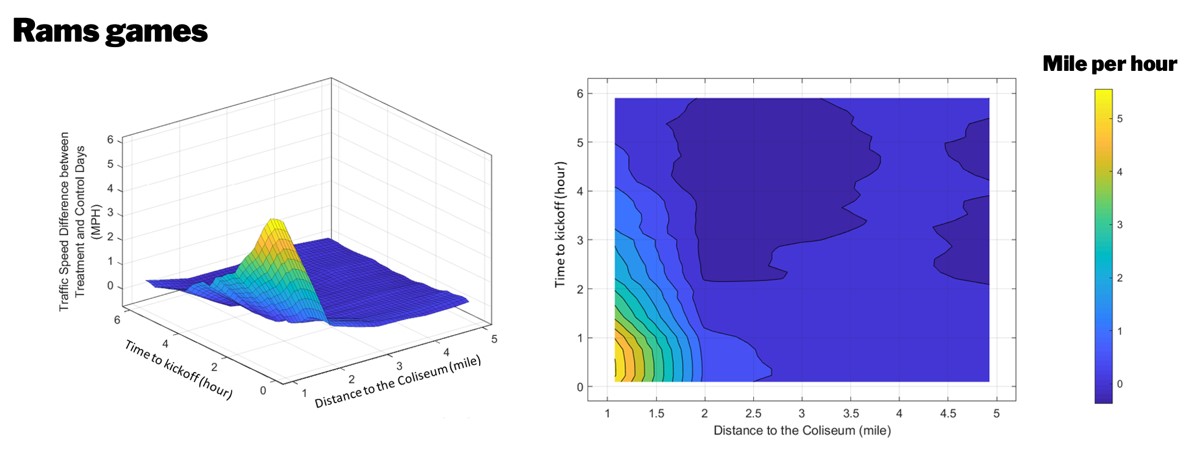News | Giuliano and Lu Present Analyzing Impacts of Major Events: A Case Study of the LA Coliseum Seminar
Stop the VideoNews

Giuliano and Lu Present Analyzing Impacts of Major Events: A Case Study of the LA Coliseum Seminar
Wednesday, February 24, 2021
by Hayley Rundle, USC, Masters of Urban Planning 2022
On February 18, METRANS, the Pacific Southwest University Transportation Center (PSR), and special partner University of Southern California Associated Students of Planning and Development (USC ASPD) launched their first transportation research webinar for the Spring 2021. USC ASPD is a student group representing Master of Urban Planning students dedicated to exploring and promoting academic and professional development issues related to the field of urban planning. “We are lucky to have access to the innovative, impactful faculty and researchers at METRANS,” noted ASPD Co-Chair and USC Master of Urban and Regional Planning student, Reaghan Murphy. “Through our partnership with METRANS as co-host of the seminar, we've been able to greatly expand our professional development offerings for our students.”
At the event, “Analyzing Impacts of Major Events: A case study of the LA Coliseum,” Dr. Genevieve Giuliano and Yougeng Lu showcased their ongoing research. Giuliano is a professor in the USC Sol Price School of Public Policy and director of the METRANS Transportation Consortium and the Pacific Southwest Region Transportation Center. Lu is a fourth year Ph.D. candidate in Urban Planning and Development and a Research Assistant at the USC Sol Price School of Public Policy.
The webinar attracted a large virtual audience, with attendance from transportation enthusiasts across the nation, including public and private sector transportation professionals, faculty, researchers, and students at all levels of study. The session began with a formal presentation and then moved to a brief discussion of the audience’s questions.
Giuliano began the presentation by describing how the research presented in this seminar was part of a much larger research initiative in partnership with LA Metro and its Archive Data Management System (ADMS), which collects traffic data from highways and arterials throughout Los Angeles. Within the larger project is the case study analyzing major events. The major events project research is motivated by the more than 2,500 events held in Los Angeles every year that add to congestion. The objective of analyzing special events is to measure their impacts on traffic and to devise strategies to better manage these impacts.
This case study focused on weekend football games at the Los Angeles Memorial Coliseum, home to the USC Trojans and the previous home to the Los Angeles Rams. The study period lasted from January 1, 2016 to December 13, 2018. The researchers examined highway traffic on major access corridors within 10 miles of the Coliseum and arterial traffic around the Coliseum within 5 miles.
“I found the analytics of the traffic congestion comparing the distance and speed from both highway and arterial roads against a pro football team versus a college team fascinating,” said Richard Breeding, Logistics Department Manager with the U.S. Navy.
Map of the research project study area.
Lu detailed the research approach which compared game days with otherwise similar non-game days. The researchers identified a treatment group and a control group. The treatment group consisted of weekend days in which actual games were held - 19 Rams game days and 10 USC game days. The control group included 39 non-game days, which were weekend games without major events. The research tested for traffic speed differences between treatment and control days from 0 to 6 hours before the game kickoff, in 15-minute intervals. Highway traffic speed data was obtained from Caltrans highway detectors and arterials traffic speed was obtained from Los Angeles Department of Transportation (LADOT) Automated Traffic Surveillance and Control (ATSAC) detectors, both of which are stored in the ADMS.
Preliminary analysis modeled by Lu demonstrated that there is more congestion on game days. On Rams game days, highway congestion occurs 0-3 hours before the game kickoff and most congestion occurs 5-6 miles from the Coliseum. On USC game days, highway congestion can be traced as early as 6 hours before the game (due to tailgating), and the most congestion occurs 5-6 miles from the Coliseum. The greatest impacts of game induced traffic on freeways tend to be found around existing interchange bottlenecks, rather than close to the Coliseum. In contrast to Rams attendees, USC attendees have more diverse, less concentrated arrival times.
Pre-game traffic patterns on highways for Rams game days.

Pre-game traffic patterns on highways for USC game days.
When studying arterials, the analysis showed for Rams game days there is a linear relationship between the distance and the time to the Coliseum and game kickoff. Most arterial congestion on Rams game days occurs close to the Coliseum; there is also more congestion when the time is approaching closer to the kickoff. Similar to Rams games days, there is a linear relationship between distance and time to the Coliseum and game kickoff on USC game days. For both Rams games days and USC game days, most congestion on arterials occurs within 2 miles of the Coliseum.
“This seminar was particularly interesting because it was on a topic that has a recurring impact on millions of people,” commented Dr. Edward Smaglik, Director of the Arizona Laboratory for Applied Transportation Research (AZTrans) and Professor of Civil Engineering, Construction Management, and Environmental Engineering, Northern Arizona University (NAU). “Understanding how we might be able to flatten the peak travel of these events, even just a little bit, can have real impacts on the traveling public.”
Pre-game traffic patterns on arterials for Rams game days.

Pre-game traffic patterns on arterials for USC game days.
Based upon these findings, Lu described three possible options for alleviating congestion on game days: 1) Stagger attendees’ arrival; 2) Encourage attendees to take public transit; and, 3) Do both.
To further study these options, three simulations were modeled. Simulation 1 proposes moving 50% of game traffic from the 3 to 0-hour time interval (prior to kickoff) to the 6 to 3-hour time interval. Simulation 2 proposes reducing game traffic demand by 20%. Simulation 3 proposed both time shifting and demand shifting.
USC Dual Master of Public Policy and Master of Urban Planning student Kevin Argueta Flores attended the event and made an interesting connection between this research project and the distribution of COVID-19 tests and vaccines. “As we begin to see more sporting events open up to the public after the pandemic, it will be interesting to see if any of these trends remain or if we begin to see significant changes. I can see this methodology being applied to COVID-19 testing and vaccination sites hosted by L.A. County at sporting venues across the region.”
Lu wrapped up the seminar by sharing some key conclusions. He described how the simulation modeling provides a useful way to evaluate possible policy strategies and how, for Rams games in particular, spreading demand over a longer time period would reduce total congestion. The difference between spreading demand and shifting to public transit is the result of assumptions on how much demand is shifted. Lastly, Lu concluded that the case study findings are generalizable to other major events in other locations.
“Events like these are incredibly important as a method to test the reception of the research, inform stakeholders, and to also synergize thoughts and ideas for further development,” reflected Breeding. “Transportation is a big factor in my personal and professional life. Within the U.S. Navy, I work in a very dynamic field in transportation logistics, and traffic patterns and time management are crucial in successful operations. Simply put, if research is not conducted in the transportation realm, we fall behind and [it] will affect our economy but also the world economy. We are all globally connected and have a significant impact on the success of each other. We have a service to each other to improve and progress.”
"Attending METRANS research seminars is always valuable for me as a student studying transportation planning,” shared Daniel Lamere, a second-year Master of Urban Planning student at USC. “This research gives students an understanding of innovative methods to analyze the traffic impacts of large events and provides empirical data which can be used by planners to develop mitigation strategies. It's interesting to think about how we can better plan for these types of large events, especially in light of the upcoming 2028 Olympics."
You can watch the full seminar or view the presentation slides.
About the Author:
Hayley Rundle is a first-year Master of Urban Planning student at the USC Price School of Public Policy, concentrating in Mobility and Transportation Planning. Hayley is interested in sustainable transportation planning to improve environmental quality, equity, and mobility for all. Hayley serves as the team leader for the METRANS Industry Engagement and contributes to the Student Research Team, summarizing cutting edge transportation research projects and findings for the METRANS Fast Facts for Students series.
News Archive
- December (1)
- November (6)
- October (4)
- September (2)
- August (3)
- July (4)
- June (3)
- May (7)
- April (8)
- March (11)
- February (8)
- January (7)
- December (7)
- November (8)
- October (11)
- September (11)
- August (4)
- July (10)
- June (9)
- May (2)
- April (12)
- March (8)
- February (7)
- January (11)
- December (11)
- November (5)
- October (16)
- September (7)
- August (5)
- July (13)
- June (5)
- May (5)
- April (7)
- March (5)
- February (3)
- January (4)
- December (4)
- November (5)
- October (5)
- September (4)
- August (4)
- July (6)
- June (8)
- May (4)
- April (6)
- March (6)
- February (7)
- January (7)
- December (8)
- November (8)
- October (8)
- September (15)
- August (5)
- July (6)
- June (7)
- May (5)
- April (8)
- March (7)
- February (10)
- January (12)















